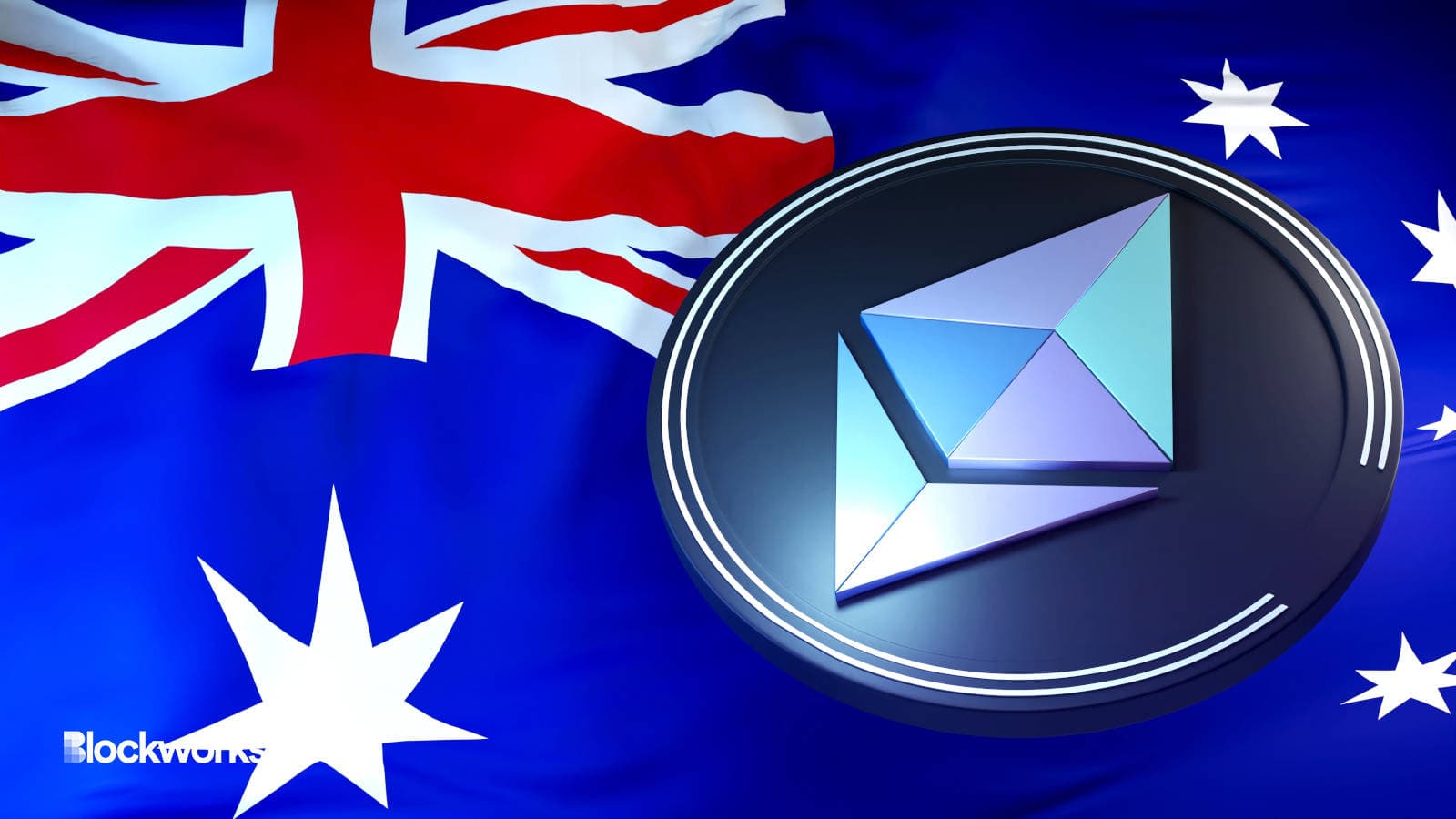‘Big Four’ Australian Bank Issues Stablecoin On Ethereum
With its recent stablecoin pilot, NAB joins a growing list of major financial institutions to use the Ethereum blockchain

Shutterstock.com/CryptoFX, modified by Blockworks
One of Australia’s ‘big four’ banks says it has completed its first intra-bank cross-border transaction using its own stablecoin via Ethereum.
The transaction, part of a National Australia Bank (NAB) pilot for an AUD-backed stablecoin, involved deploying stablecoin smart contracts for seven major global currencies, showcasing the potential to shorten cross-border transactions from days to minutes.
NAB intends to issue its stablecoin under the ticker “AUDN,” which will be managed as a liability on its books. The firm further plans to enable transactions for the Australian, New Zealand, Singapore and US dollars, as well as the euro, yen and pound sterling.
Digital asset infrastructure provider Fireblocks and fintech platform Blockfold assisting with the smart contracts, direct custody of the tokens (alongside minting and burning). NAB says its stablecoin was issued as an ERC-20 token.
“We believe that elements of the future of finance will be blockchain enabled and we’re already witnessing rapid change in the tokenisation market,” Drew Bradford, NAB Markets Executive General Manager, said in a statement.
The bank claimed it’s the world’s first major financial institution to process a cross-border stablecoin transaction via a public Layer-1 blockchain. A NAB spokesperson shared the current AUDN token contract with Blockworks, viewable on Etherscan.
In any case, ANZ — another ‘big four’ Australian bank — became the first institution in the country to issue and conduct payment of a stablecoin linked to the nation’s dollar last year, also via Ethereum, although it wasn’t cross-border.
As well, JPMorgan alongside Singapore’s DBS Bank and others executed foreign exchange transactions using tokenized deposits, a slightly different concept to stablecoins, as part of a 2022 pilot. The group used Ethereum Layer-2 network Polygon for the trades.
A number of institutions worldwide have also leveraged Ethereum and Polygon to issue tokenized bonds.
Still, NAB considers its recent stablecoin transaction a milestone for the bank. It expects to support “select corporate and institutional clients” in transacting with digital assets by the end of the year.
Updated Mar. 15, 2023 at 5:53 pm ET: Added AUDN token contract.
Get the news in your inbox. Explore Blockworks newsletters:
- The Breakdown: Decoding crypto and the markets. Daily.
- Empire: Crypto news and analysis to start your day.
- Forward Guidance: The intersection of crypto, macro and policy.
- 0xResearch: Alpha directly in your inbox.
- Lightspeed: All things Solana.
- The Drop: Apps, games, memes and more.
- Supply Shock: Bitcoin, bitcoin, bitcoin.





